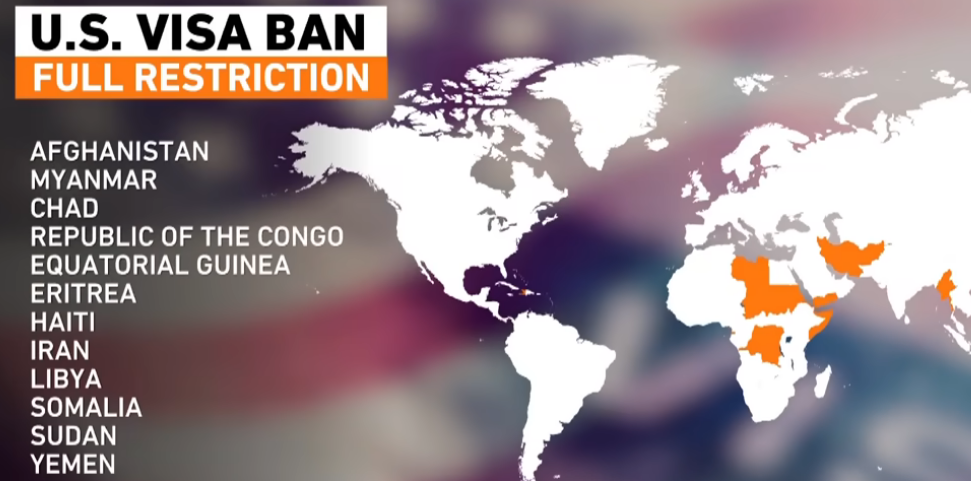
A newly expanded U.S. travel ban 2025, signed into effect by President Donald Trump, officially came into force shortly after midnight on Monday. The directive restricts nationals from 12 countries—primarily in Africa and the Middle East—from entering the United States, intensifying the administration’s ongoing immigration enforcement policies.
Affected Countries
The affected countries include Afghanistan, Myanmar, Chad, the Republic of Congo, Equatorial Guinea, Eritrea, Haiti, Iran, Libya, Somalia, Sudan, and Yemen. In addition, citizens from Burundi, Cuba, Laos, Sierra Leone, Togo, Turkmenistan, and Venezuela face increased restrictions if they are currently outside the U.S. and do not possess valid visas.
According to updated guidance issued to U.S. diplomatic missions, the ban does not invalidate previously issued visas. However, new visa applications from citizens of the banned countries will be denied unless applicants qualify under strict exemption guidelines. Travelers with valid visas issued before the implementation date should still be permitted entry into the United States.
Limited Migration
While some of the countries on the list have limited migration to the U.S., nations like Haiti, Cuba, and Venezuela have contributed significantly to recent immigration trends. The move has sparked concern among immigrant communities and advocates.
At Newark International Airport, Haitian-American Elvanise Louis-Juste expressed dismay over the policy. “Many Haitians just want to escape violence and poverty,” she said. “I have family in Haiti. This is heartbreaking.”
Politically Motivated?
Critics argue the ban is politically motivated rather than rooted in national security. Abby Maxman, president of Oxfam America, called the policy divisive and harmful to vulnerable populations. “This policy is not about protecting Americans—it’s about excluding communities that are in search of safety and opportunity,” she said.
The administration claims the policy is necessary due to “inadequate identity-management protocols” in the banned countries and cites data from the Department of Homeland Security regarding visa overstays. Eight of the 12 banned countries reportedly have high rates of visitors overstaying their permitted entry periods.
President Trump has also referenced recent incidents, including a terror attack in Boulder, Colorado, as justification for the enhanced restrictions. The suspect in that case was from Egypt, which notably is not included on the current banned list.
What about Afghanistan?
The inclusion of Afghanistan has drawn particular criticism, especially from groups aiding in the resettlement of Afghans who assisted U.S. forces during the two-decade-long war. However, the order makes exceptions for Afghan nationals eligible under the Special Immigrant Visa (SIV) program. The U.S. resettled around 14,000 Afghan refugees in the 12-month period ending September 2024.
The new ban is seen by some analysts as a more legally robust version of Trump’s 2017 executive order, which was initially blocked by courts. By focusing on visa issuance and overstays, the current policy may better withstand legal scrutiny.
